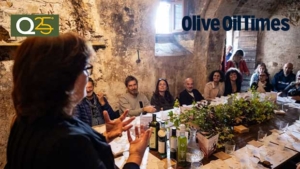Qualivita Report on PDO PGI Tourism highlights the growing trend of sustainable tourism in Italy, creating new opportunities for producers and promoting the country’s unique regions
[ITA] Il rapporto Turismo DOP della Fondazione Qualivita evidenzia la crescente tendenza del turismo sostenibile in Italia, che crea nuove opportunità per i produttori e promuove le regioni uniche del Paese.
Deviating from the most popular tourist destinations, a growing number of travelers in Italy are embracing more sustainable experiences centered on olive oil, local food traditions, and artisanal culture.
A new report, published by the Qualivita Foundation and supported by the Italian Ministry of Agriculture, Food Sovereignty, and Forestry, sheds light on a phenomenon that is reshaping how food excellencies, such as olive oil, are presented to tourists and consumers alike.
It’s essential to tell the story of olive oil, where it comes from, how it’s made, and the region behind it.
– Mauro Rosati, director, Qualivita Foundation
According to the “PDO Tourism — 1st Report,” 70 percent of the tourism activities associated with Protected Designation of Origin (PDO) and Protected Geographical Indication (PGI) certified products began in the last five years.
The report shows that PDO and PGI areas encompass more than 2,100 Italian towns, most of which are small borghi and villages located in the interior and rural regions.
Overall, PDO and PGI products are worth €20 billion, with more than 200,000 operators and companies involved.
PDO and PGI-certified foods are products associated with specific traditions and geographies. The European Union-backed designation provides guarantees of quality and production method, along with legal protection against imitation products.
In the case of extra virgin olive oil, Italy has 50 PDO and PGI certifications, accounting for nearly ten percent of the country’s total production.
Tapping into tourism and linking it to the value conveyed by PDO and PGI certifications has become an additional source of income for olive oil producers, farmers, millers and farmhouses.
[…]
Fonte: Olive Oil Times.com


